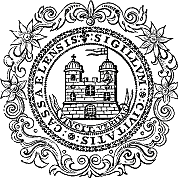CASHEL, a city
CASHEL, a city (being the seat of an archbishoprick and diocese), borough, market, and post-town, in the barony of MIDDLETHIRD, county of TIPPERARY, and province of MUNSTER, 12 miles (N. N. W.) from Clonmel, and 75 (S. W.) from Dublin; containing, within the corporate lands, 12,582 inhabitants, of which number, 6971 are in the city. This place was the residence of the kings of Munster; and a synod was held in it by St. Patrick, St. Ailbe, and St. Declan, in the reign of Aengus, who, after his conversion to the Christian faith by St. Patrick, is said to have founded a church here. It is uncertain at what period Cashel first became the head of a bishoprick; indeed, its early history is involved in much obscurity, and has been a fertile source of hypothetical inquiry. Some writers assert that Cormac Mac-Culinan, King and Bishop of Cashel, who was killed in his retreat from battle in 908, either founded or restored the cathedral, by building on the rock of Cashel an edifice now called Cormac's chapel, one of the most interesting architectural remains in the kingdom; but its erection is, with greater probability, ascribed by others to Cormac Mac Carthy, the pious King of Desmond.
12 miles (N. N. W.) from Clonmel, and 75 (S. W.) from Dublin; containing, within the corporate lands, 12,582 inhabitants, of which number, 6971 are in the city. This place was the residence of the kings of Munster; and a synod was held in it by St. Patrick, St. Ailbe, and St. Declan, in the reign of Aengus, who, after his conversion to the Christian faith by St. Patrick, is said to have founded a church here. It is uncertain at what period Cashel first became the head of a bishoprick; indeed, its early history is involved in much obscurity, and has been a fertile source of hypothetical inquiry. Some writers assert that Cormac Mac-Culinan, King and Bishop of Cashel, who was killed in his retreat from battle in 908, either founded or restored the cathedral, by building on the rock of Cashel an edifice now called Cormac's chapel, one of the most interesting architectural remains in the kingdom; but its erection is, with greater probability, ascribed by others to Cormac Mac Carthy, the pious King of Desmond.
In 990, this place was fortified by Brian Boru, who rebuilt thirteen royal houses and palaces in Munster, one of which is still pointed out at the corner of Old Chapel-lane, in this town. Until the year 1101, the buildings on the rock of Cashel were merely such as composed the Dun, or royal residence, or the Carsoil, or habitation on the rock of the kings of Munster; the cathedral probably occupied some other site. In that year, according to the Annals of Innisfallen, Murtogh O'Brien convened a great Assembly of the clergy and people of Cashel, in which he assigned over to the bishops that "hitherto royal seat" of the kings of Munster, and dedicated it to God, St. Patrick, and St. Ailbe. The same annals record that, in 1127, Cormac Mac Carthy, King of Desmond, erected a church here (the chapel above noticed), called from him Teampul Chormaic, which in 1134 was consecrated by the archbishop and bishops of Munster, in the presence of the nobility and clergy. A new church was built in 1169, on the site of the present cathedral, by Donald O'Brien, King of Limerick, who endowed it with lands, and converted the church founded by Cormac into a chapel or chapter-house on the south side of the choir of the new edifice.
